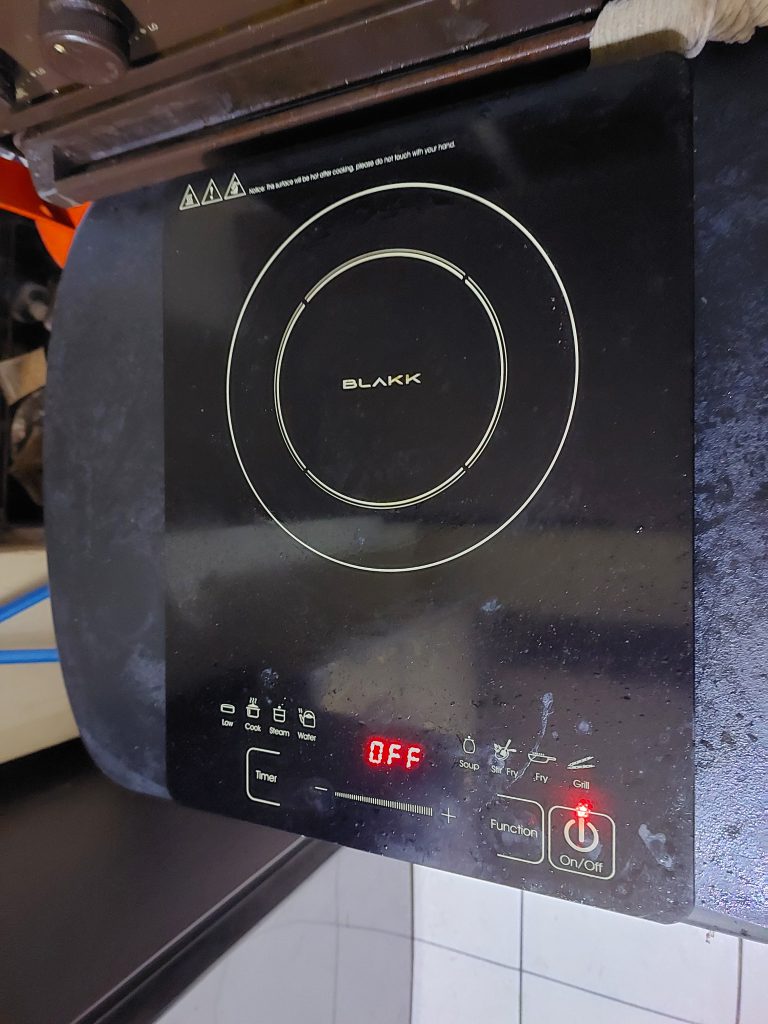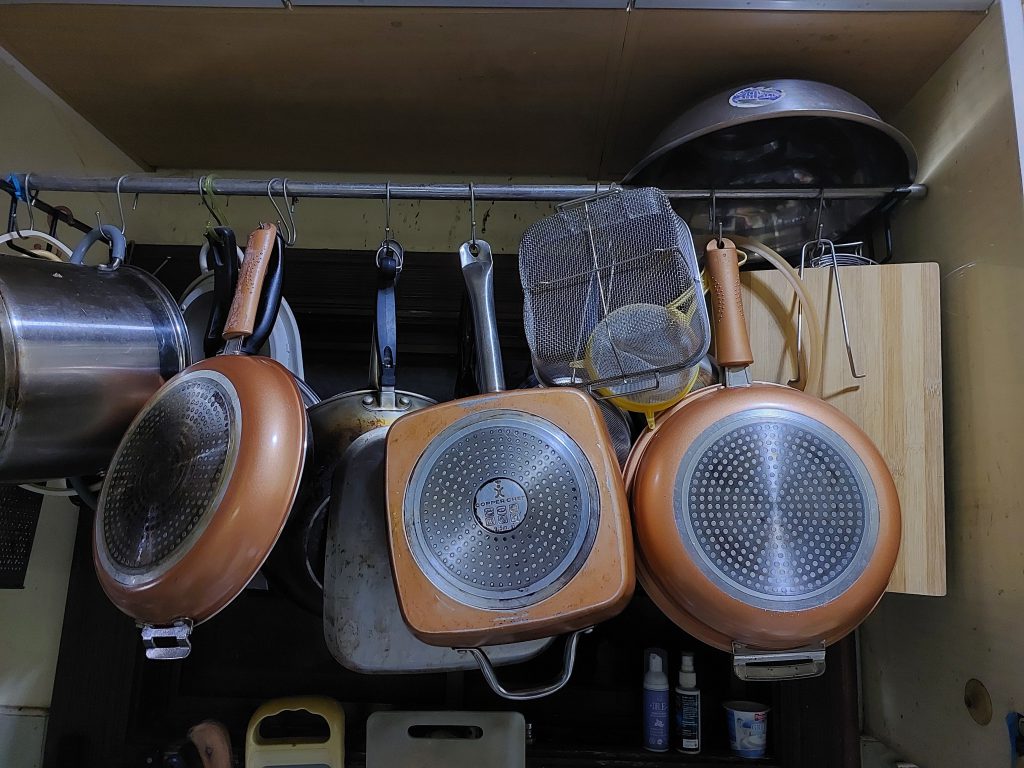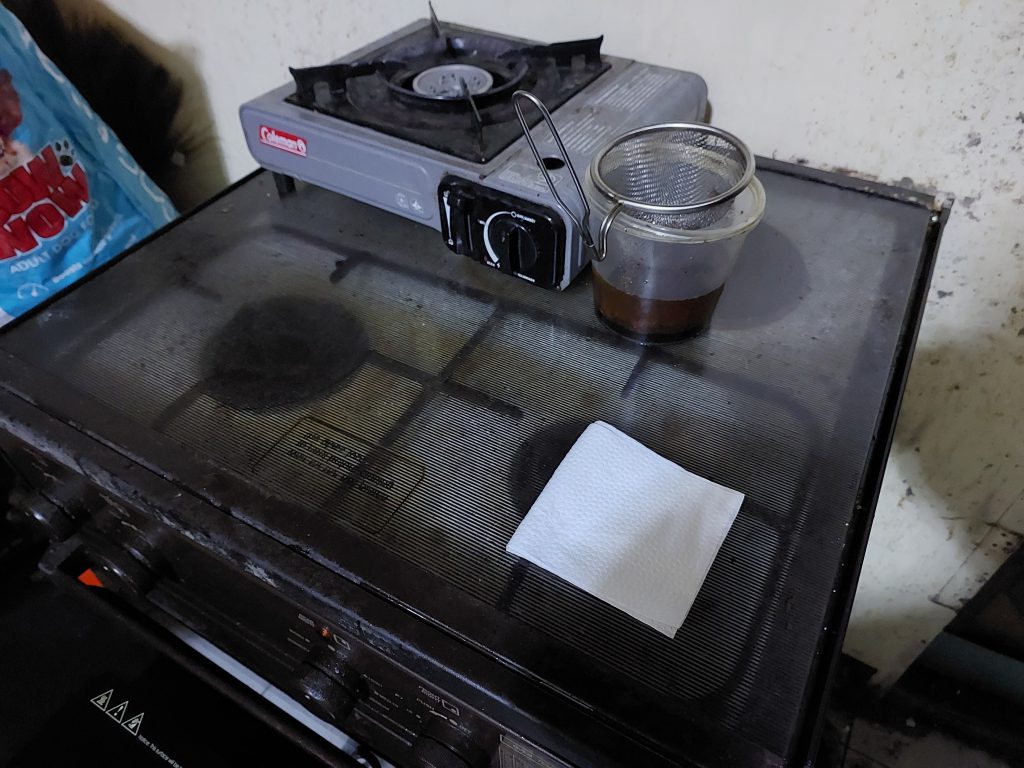
As someone who’s currently thinking of designing his dream kitchen, I’ve recently shifted my attention towards induction stoves and cookers.

Now I’m someone who just recently fell in love with cooking out of necessity. As a new father, I have to make sure I feed my son nutritious home-cooked meals and not rely on take-out food to sustain him. Doing so would have drastic effects on my finances and his health.
So I learned how to cook using the regular gas stove and have been doing so for the last 3 years. Only recently did I make a switch to induction cooking and not because of any conscious effort but because I ran out of gas and didn’t have the chance to order one quickly.
I’d been gifted an induction cooker by a cousin a few years ago and I had used it a few times in the past. My experience with it, although good wasn’t like the gas stove. And that was because I was biased towards the gas stove. I thought it was better, more responsive, and more practical.

It was only after using the induction stove for more than a week that I realized how nice it was to use it. So, I went ahead and did my research and was pleasantly surprised with what I found out.
I was so pleasantly surprised that I decided that induction stoves or an induction range would be my main cooking apparatus in my future kitchen with a gas stove as a backup.
This article is all about what I found out about induction stoves and why I’m making the switch. Here’s hoping you’ll like what you read here too.
What are Induction Stoves?
Induction stoves are a type of electric cooktop that use electromagnetic fields to heat cookware directly, rather than heating a burner which then transfers heat to the pot or pan. Now you might think that this is a fairly new invention.
It actually isn’t. Patents have been issued since the 1900s for induction cookers.
The only reason why it’s not as popular as it should be is because it was costly to own and operate.
But that was then.
These days, you can get an induction cooker for as low as Php 3000.00 (or $60)
How do Induction Stoves Work?
In a nutshell, the stove creates a magnetic field that interacts with the magnetic materials in your cookware (like iron or steel) causing the pan itself to heat up.
Voila!
You’re now cooking with an induction stove.
And that’s basically it.
I could do a more in depth explanation as to how it works but I’m not really that technically adept. So maybe I’ll share that information in the future.
For now, let’s just say induction cookers work like magic.
It’s modern sorcery. A delightfully functional form of sorcery that makes cooking way more fun these days.
But There’s Got to be a Catch Right?
Sure. Like everything else, going the way of induction cooking has its pros and cons. I’m not gonna say it’s all good but I would say the pros far outweigh the cons of switching from traditional gas cooking to induction cooking.
Here are the pros and cons:
Pros:
Energy Efficiency
Induction stoves transfer energy directly to the pan heating them up faster than both electric and gas stoves. This heats food faster and wastes less energy. This also means quicker cooking times and lower energy bills.
Precise Temperature Control
You can adjust heat levels instantly and accurately. Induction offers more accurate and responsive temperature control than electric stoves. It’s comparable to gas in responsiveness, but often more precise. This is crucial for delicate cooking techniques like melting chocolate or making sauces.
Safety
The cooktop itself doesn’t get very hot, making induction generally safer than both gas and electric. There’s no open flame like with gas, and the cooktop itself doesn’t get as hot as an electric burner. This reduces the risk of burns and fire hazards.
Easy to Clean
For someone like me who spends entire Sundays cleaning the house, spending less time cleaning the cooking software is a blessing. All I really have to do is moisten a microfiber rag and wipe the top and I’m done.
Cooler Kitchen
Induction generates less ambient heat, keeping your kitchen cooler compared to gas or electric stoves. This can be a life saver during hot summers.
It also looks cool. Like cooking inside a spaceship with all the futuristic look and vibes it gives off.
Environmental Impact
Induction is more energy-efficient than both gas and electric, potentially reducing your carbon footprint if your electricity comes from clean sources.
Cons:
Say Goodbye to Your Old Pots and Pans
This Is the number one deal-breaker for a lot of people who are planning to or are switching to induction cooking: You need pots and pans made of ferromagnetic materials like cast iron or stainless steel.
If you’re a cheapskate like me, you’re going to need to shelf those cheap, old pans you bought as a bachelor in exchange for more expensive ones.
Now, I’m fortunate to have access to 3 pots that are compatible with the induction cooker but that initially made it a daunting task for me to cook because I was so used to having different sized pots to work with on the gas stove.

Aluminum and copper pans do not work with induction cookers.
Super Expensive Initial Cost
Induction stoves are often more expensive upfront than traditional electric or gas stoves. The higher upfront cost might not be feasible for all budgets. If someone is on a tight budget, a basic electric or gas stove might be more appropriate.
Here’s one from Samsung that I’m really coveting right now. But there are also cheaper alternatives like the one I have from Blakk.
There’s a Learning Curve Involved
It may take time to get used to the quick heating and precise controls.
I know.
I burnt my first batch of minced garlic last week.
You Need to be a Little Extra Careful With it
If you’re not careful, you could end up losing your induction cooker while cooking. You see, the glass-ceramic surface can be scratched by rough-bottomed cookware. So be extra careful with it. Place the pan gently on top and don’t move it around too much so you don’t scratch the surface.
Repairing an induction cooker can be complicated and expensive unlike gas or electric stoves.
It can Get Noisy
Some users report a humming or buzzing sound during operation. This might be a deal breaker for some people who hate annoying, repetitive noises.
My Blakk Induction Cooker emits a loud enough sound but I’m not too bothered by it. In fact, I sometimes forget the sound when I’m in the zone.
Power Requirements and Outages
Some homes, especially older ones, might need electrical upgrades to support an induction stove.
Unlike gas stoves, induction stoves won’t work during a power outage, which could be a concern in areas with unreliable electricity.
And in the Philippines, power outages are commonplace.
But if you had solar panels… nah… that’s going to be another topic for another day.
As you can see, the cons are mostly trivial in nature while the pros provide a very good point as to why we should switch to induction cooking.
However, it’s important to note that the choice between induction, electric, and gas often comes down to personal preference, cooking style, and specific circumstances. For instance, some chefs still prefer gas for its visual feedback and ability to char foods directly over the flame.
Additionally, the need for compatible cookware and higher upfront costs of induction might be deterrents for some.
Comparison of Induction Stoves, Gas, and Electric Stoves
We’ve already tackled the pros and cons of owning and using induction stoves, but what about gas stoves and electric stoves? Don’t they deserve a closer look too?
To be fair to gas stoves and electric stoves, here are the pros and cons attached to them.
Let’s start with Gas Stoves:
Gas Stoves

For the longest time, I’ve been using gas stoves to cook meals. As a backup, I have a butane stove that is more apt for camping or cooking outside. Here are the benefits of using a gas stove:
Pros:
Offers Visual and Tactile Feedback
The reason why people love gas stoves is because there’s a very organic feel involved with using it. You see the flame and control it by twisting the knobs to make it bigger or smaller. You also get instantaneous results.
It heats up quickly. The burners also cool down almost just as quick when you turn it off.
Versatility
There’s a reason why many professional chefs prefer gas stoves – versatility.
Gas stoves are great for high-heat cooking and ideal for wok cooking and searing because the flame can wrap around the wok. You can also char vegetables directly over the flame. It goes without saying that it is compatible with all types of pots and pans.
Affordability
Gas stoves are more affordable than induction stoves. There are no special electrical requirements needed. You can get a single burner gas stove for as low as Php500.00 (or $10). A double burner costs double.
Works During Power Outages
Very important if you live in the Philippines where power outages happen all the time.
Lasts a Lifetime
Gas stoves are very durable leading to longer lifespans. They also have fewer complex parts so repairing one is easy and affordable.
Cons:
Fire Hazard and Burn Risk
It’s an open flame. There’s also gas that could be present in your house that you don’t know about. Without proper maintenance, your gas source or your gas stove might be leaking gas into your home’s air.
So many things could go wrong.
Without proper ventilation or a manner for the gas to dissipate, it could collect within your kitchen. If you’re not careful, you could end up losing a house to flames.
Health Risk
This is what I find really alarming with gas stoves: they negatively affect your indoor air quality. Gas stoves emit combustion byproducts like nitrogen dioxide. And it could also leak benzene (a known carcinogen into your home).
There’s an entire list of harmful byproducts that gas stoves introduce to your home and it doesn’t only happen while you’re cooking. Even if you turn it off, it could still be leaking harmful byproducts into your home’s air.
Not as Efficient as an Induction Cooker
Gas stoves loves about 60% of its heat efficiency to its surroundings. It can also create hot spots in your pan. And keeping a low flame stable can be tricky.
I watched a side-by-side comparison of how fast gas stoves and induction cookers can boil an egg and the induction stove was faster by at least 20 seconds.
Hard to Clean
Cleaning a gas stove is hard. Carbon deposits can build up on the grate and other parts of the stove. And sometimes, when you’re not paying attention, you can cut yourself while cleaning it.
Increases the Heat in the Kitchen
Gas stoves can make kitchens uncomfortably warm. Imagine cooking in a non-ventilated kitchen during the hottest day of summer. Get the picture? Not too welcoming a sight, right?
Electric Stoves
I’ll have to admit that I have very little experience with electric stoves. Here’s what I know about them:
Pros:
- They’re affordable.
- They’re easy to install.
- There’s no open flame and it provides consistent heat.
- Easy to clean.
- Can work with all types of pots and pans.
In short, this is the closest thing to a mix of a gas stove and an induction cooker.
Cons:
- Less energy efficient than an induction cooker.
- Slow to heat and cool and can burn food that spills over the cook top’s surface.
- You can’t use it if there’s a power outage.
Conclusion
When choosing between an induction stove, gas stove, or electric stove, you should consider factors such as:
- Your budget
- Kitchen size and layout
- Cooking habits and preferences
- Desired features (e.g., smart capabilities, specific cooking modes)
- Existing cookware compatibility
This comprehensive comparison should help you understand the key differences between induction cookers, gas stoves, and electric stoves.
Each type has its own set of advantages and disadvantages, and the best choice often depends on individual needs, preferences, and circumstances.
Some key points to consider when making your decision:
- Cooking style: If you do a lot of high-heat cooking or use a wok frequently, gas might be preferable. For precise temperature control, induction is excellent.
- Energy efficiency: Induction is the most efficient, followed by electric, then gas.
- Safety: Induction is generally considered the safest, while gas has open flame risks.
- Cost: Consider both initial costs and long-term energy costs.
Me, I’m going with an induction stove.


1 thought on “Are Induction Stoves the Way to the Future?”